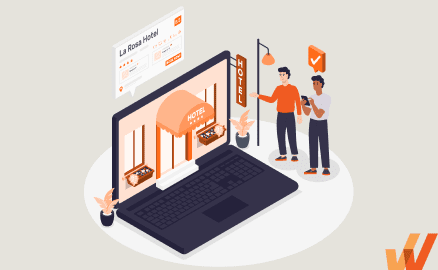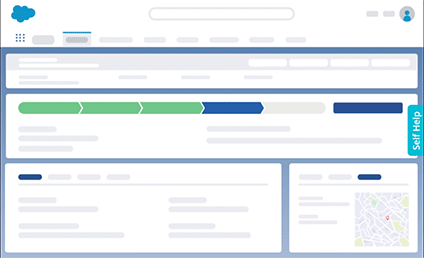
Disha Gupta


Think about the last time you planned a trip, whether it was a big international trip, domestic business travel, or a quick staycation.
How much of your trip planning and bookings were done through digital means?
Living in the digital age, the answer is probably all of it. From flights and hotels to browsing for fun things to making restaurant bookings, and using credit card rewards, there’s a whole ecosystem of apps and services that we can use to make each part of our trip quick and easy.
Integrating digital solutions into the hospitality industry isn’t an entirely new occurrence. But the desperation of hospitality organizations during the pandemic sent many into a frenzy for the latest tools in the market. The result of this shift is an industry that is now spoiled for choice when it comes to digital platforms, with many making rash decisions due to short-term pressure.
Nick Liddle, commercial director at the restaurant software, Vita Mojo, tells Computer Weekly that the uptick in digital solutions for hospitality organizations meant more “people cobbled things together and created a Frankenstein-like mess that requires a lot of manual work.”
This sudden acceleration toward digital transformation in hospitality has undoubtedly resulted in disjointed systems, confused employees, and inefficient customer experiences. But optimizing technology channels with a clear and systematic approach to digital adoption can help organizations maximize their systems without stretching resources beyond their limits.
In the context of the hospitality industry, digital adoption refers to the integration and utilization of digital technologies and tools to enhance the overall guest experience, operational efficiency, and business processes.
Digital adoption in hospitality encompasses the implementation and utilization of various digital solutions, such as mobile applications, self-service kiosks, online booking systems, digital menus, contactless payments, and guest management platforms.
By embracing these digital innovations, hospitality businesses can streamline operations, provide personalized guest services, improve communication, and gain valuable insights through data analytics. Digital adoption in hospitality is becoming increasingly crucial in meeting the evolving expectations of tech-savvy guests and staying competitive in the modern hospitality landscape.
Digital adoption tactics go beyond the technology itself, enabling organizations to think about how technology fits into broader goals at an organizational level. Technology alone won’t deliver the ROI,” says Tristan Gadsby, founder of the hospitality experience platform, Alliants, in an interview with Skift.
Investments made into adoption initiatives are meant for the long-term, whether that’s through unlocking revenue growth, inspiring a particular work culture, building trust with customers, or gaining a competitive edge in the market.
“It’s essential for the entire organization, including the operations, marketing, and technology teams, to fully adopt and embrace the new solution. These experiences cannot come to life without their involvement, as hospitality remains an inherently human business,” he adds.
Digital adoption unlocks opportunities for the hospitality industry across all functions and bottom-line goals, including:

In a world where everyone and everything is online, can hospitality organizations really get away with half-baked digital transformation strategies?
The answer is no. There are simply too many great examples across industries for customers to draw a comparison and lose confidence in a brand.
With digital adoption top of mind, the hospitality industry can emerge as a leading disruptor by carefully deploying the right tools to:
Digital adoption in hospitality plays a pivotal role in building a genuine customer experience by seamlessly integrating technology to enhance every touchpoint of a guest’s journey. From the initial booking process through mobile apps or online platforms to self-check-in kiosks, digital adoption streamlines the guest experience, reducing wait times and enhancing convenience.
Personalized recommendations and tailored services based on guest preferences are made possible through data-driven insights gathered from digital interactions. Moreover, guest feedback is actively sought through digital feedback mechanisms, enabling hotels and restaurants to respond promptly to any concerns and continuously improve their offerings. By embracing digital tools, hospitality businesses can create a seamless and delightful customer journey, fostering genuine connections with guests and leaving a lasting positive impression.
Investing in digital adoption tools helps your employees work quicker and manage operations at scale without compromising quality. This is especially beneficial in understaffed industries like restaurants, bars, hotels, and casinos in the US that had nearly two million unfilled openings early this year.
Digital adoption helps organizations better utilize technology to reduce staff workload on manual and repetitive tasks. For example, automated processes for customer check-ins, billing, inventory management, scheduling, and cross-functional collaboration give employees less to worry about with administrative operations and allow them to focus on delivering customer experiences that meet expectations.
The diversification of purchasing and customer acquisition channels not only contributes to more revenue generation but also makes revenue streams more reliable.
Hospitality organizations use digital channels to facilitate higher volumes of transactions in different places while consistently reaching new customers through personalized and targeted marketing campaigns. Another major avenue for revenue generation lies in how digital adoption allows businesses to explore untapped revenue pools. This opportunity is especially prominent in the food and beverages industry, like how the Azurri Group used the pandemic to create virtual brands from existing kitchens and introduce new products to retailers.
A report by McKinsey also highlighted how the effective integration of food delivery services into restaurants empowers businesses with data they can use to create custom menus for each consumer. These personalized menus consider food preferences, allergies, and tailored recommendations, giving companies a set-it-and-forget-it approach that proactively encourages customers to increase their total order value.
Trailing behind the need for better customer experiences, 74% of hospitality business operators say they use digitization to gather more data and insight into their business. More digital channels mean more avenues for companies to analyze both customer and employee interactions.
The procurement platform, Marketboomer, used Whatfix’s digital adoption platform to help its clients in the hospitality industry accelerate effective training programs and technology onboarding. Whatfix gave their team visibility into how employees interacted with in-app self-help content to address their questions and concerns. They discovered that employees could use Whatfix’s content for support 98% of the time, decreasing the volume of customer support tickets. Deeper data could also show them the exact content that was being engaged and where in the product it happened, giving businesses a better idea of employee friction within existing technology platforms.
In the wake of the pandemic, many businesses in the hospitality sector have been turning toward agile methodologies — rooted in the idea of agile software development — to adapt to travel and leisure disruptions. Melissa Jurkoic, Chief Experience Officer at the hospitality software Thynk.Cloud writes about three principles hospitality businesses can follow to embrace this agile mindset.
The role of effective technology adoption in enabling these principles is imminent. Accurate and timely data about your customers and employees are crucial for organizations to equip teams with the right tools, processes, and overarching strategies.
Whether managing limited resources, meeting new customer demands, or optimizing products for new audiences, proficiency in managing and maintaining processes across different platforms allows hospitality businesses to pivot without putting their operations at risk.
Although digital channels aren’t a stranger to the hospitality industry, some organizations fail to recognize the importance of using technology intentionally to generate results. Common mistakes include:
Prioritizing these digital adoption guidelines can help companies avoid these pitfalls:
Before implementing digital adoption tactics into different business functions, understand where your organization currently stands in its digital capabilities. You’ll want to evaluate existing factors, such as:
A digital adoption strategy will help hospitality organizations avoid the pitfalls of poor technology integrations, which have proven to negatively impact businesses that rushed into going digital during the pandemic. Kim Teo, co-founder of Mr. Yum, tells Computer Weekly that companies that made hasty decisions during the pandemic ended up with more manual work due to technology instead of streamlined processes.
Hospitality businesses will benefit from guiding principles defining how their digital adoption efforts should tie into their culture, goals, and resource availability. McKinsey outlines a few ways companies can think about their strategy in a digital world:
Digital adoption platforms (DAP) help hospitality businesses integrate technology into their day-to-day operations faster with less technical workflow. Whatfix is an example of a DAP that streamlines efforts to upgrade the user experience and amplify user support channels without any code.
With a DAP, businesses can provide technology use with a variety of pre-built UX elements that guide users through new technology platforms, digital workflows, and troubleshooting efforts.
DAPs help companies automate new user training and integrate content directly into an in-app experience. This increases information retention with hands-on experience and gives companies a set-it-and-forget-it approach that they can scale quickly across multiple workflows and user segments.


Manual data collection methods take a lot of work to scale. It becomes difficult to capture interactions that don’t require form fills or are more behavioral-driven, like content engagement, product drop-off rates, mouse clicks, scrolls, and more.
For example, companies use heatmap software to capture exactly how website visitors or application users interact with different on-screen elements. These interactions give businesses insight into how their digital channels are being adopted and if customers are enticed by what they see. On the other hand, Whatfix DAP empowers businesses with data on how users are progressing through different user journeys and engaging with support content.
Marketboomer used Whatfix to deploy guided product flows, links, pop-ups, and videos and tracked over 3,500 user engagements across all this in-app content. These measurable interactions can be sliced and diced to show companies where users need the most support and which users need the most help.
Before adopting new digital solutions, assess your technology stack’s ability to support the integration of new and improved workflows, goals, and tools. Your digital infrastructure and networks should be able to scale alongside any change initiative your business introduces without compromising service reliability, security, and quality.
During the pandemic, a major challenge businesses faced were integrations. In the same interview with Computer Weekly, Teo says that the data coming in and out of different applications called for hospitality companies to decide between building their own integrations or purchasing solution providers off the shelf. In his business, Mr. Yum, would dedicate 20% of their team’s time to ensure their integrations were working. Evaluating your available resources and ensuring you have the capabilities to manage the different tools you’re using is crucial.
A 2023 digital adoption survey by Whatfix discovered that although 93% of respondents used at least three different software applications, 78% felt they needed more expertise to use these tools effectively in day-to-day operations.
For instance, introducing a new feature-rich customer relationship management system that employees don’t know how to navigate will only result in messier data, more discrepancies in customer transactions, and a slower customer experience.
Training programs aren’t just another box to check off. Adopt a dynamic approach to your training by delivering content in engaging new formats. Instead of just relying on video tutorials, modules, and live sessions, leverage just-in-time training that makes information accessible to users 24/7, whenever they need it most. Self-serve training is a great way for companies to scale training across a wide user base without stretching their budgets and bandwidth.
Consistency is key.
Once you’ve deployed your digital adoption tactics, don’t forget to check on your performance regularly. Some organizations set up task forces, recurring meetings, or entire departments dedicated to maintaining digital channels and their impact on key product metrics like user adoption, activation, and retention.
Different cultural, economic, and sociopolitical trends can easily impact consumer behavior, impacting their purchasing decisions, app usage, screen time, and more. Use digital adoption tools to give you ongoing visibility into usage patterns and how they might change over time.
Whatfix digital adoption platforms give companies a competitive advantage by making it easy to deploy immediate user experience improvements based on real-time data. This empowers hospitality businesses with the ability to proactively address customer concerns before it causes widespread dissatisfaction. It also gives teams historical data that they can use to run innovative new product experiments.



What does digital adoption look like when implemented successfully? Let’s take a look at two examples:
BeerBoard helps businesses in the food and beverage industry optimize their operations according to real-time data like sales performance, user engagement with digital channels, and inventory. Despite having powerful technologies to help restaurants and bars increase their revenue, they discovered that success was only possible if they could engage retailers effectively and educate them on maximizing its platform features in end-to-end operations.
BeerBoard used Whatfix to fill the digital literacy gap and help customers get up to speed with their feature-rich platform faster. Within BeerBoard’s platform, SmartBar, the team deployed in-app guidance to help retail employees operate the platform and answer support questions independently and immediately after a problem arises. This was especially helpful for retailers who were prone to high employee turnover but found it difficult to constantly provide sufficient training for all incoming employees.
Crescent Hotel and Resort is a hotel management company with an extensive portfolio of hotels around the country, including those from brand partners like Marriott International, Hilton, and Hyatt.
Since 2015, the company has moved all its paper-based operations to digital platforms — like payroll, audit compliance, and procurement. Rob Smith, CFO at Crescent, tells Hospitality Net about an impactful change they made to their night audit packs. Typically, Smith’s team would put together a routing sheet with names and signature slots that get manually passed along to each person involved. This document would only make it back to Account days later. Today, this process is centralized in the MyDigitalOffice platform, so reports can be authorized quickly.
With Whatfix, hospitality organizations can deliver a best-in-class software user experience without the hassle of having to invest in new engineering resources or accommodate prolonged development timelines.
Digital adoption platforms provide step-by-step guidance and real-time support to both staff and guests, ensuring a smooth transition to digital solutions. For employees, DAPs offer interactive walkthroughs and training modules, empowering them to become proficient in using new tools and processes. This enhances their confidence and efficiency in delivering guest services.
Additionally, DAPs facilitate seamless guest experiences by providing on-screen instructions and interactive features, allowing guests to navigate self-service kiosks, mobile apps, and other digital touchpoints effortlessly. The data analytics capabilities of DAPs also enable businesses to gain valuable insights into guest behavior and preferences, leading to personalized services and improved customer satisfaction. Ultimately, DAPs streamline digital adoption in the hospitality industry, creating a more tech-savvy and customer-centric environment.
To learn more about Whatfix digital adoption solutions, schedule a free demo with us today!
Thank you for subscribing!